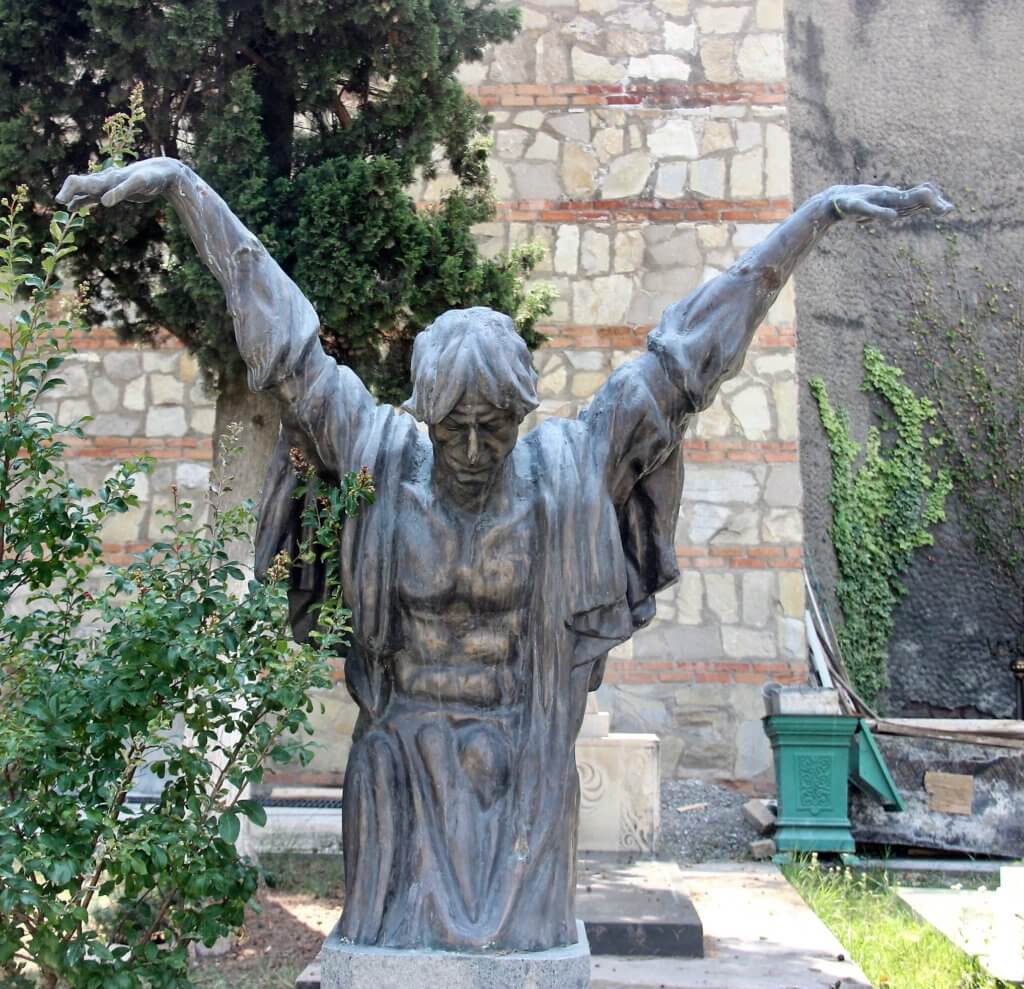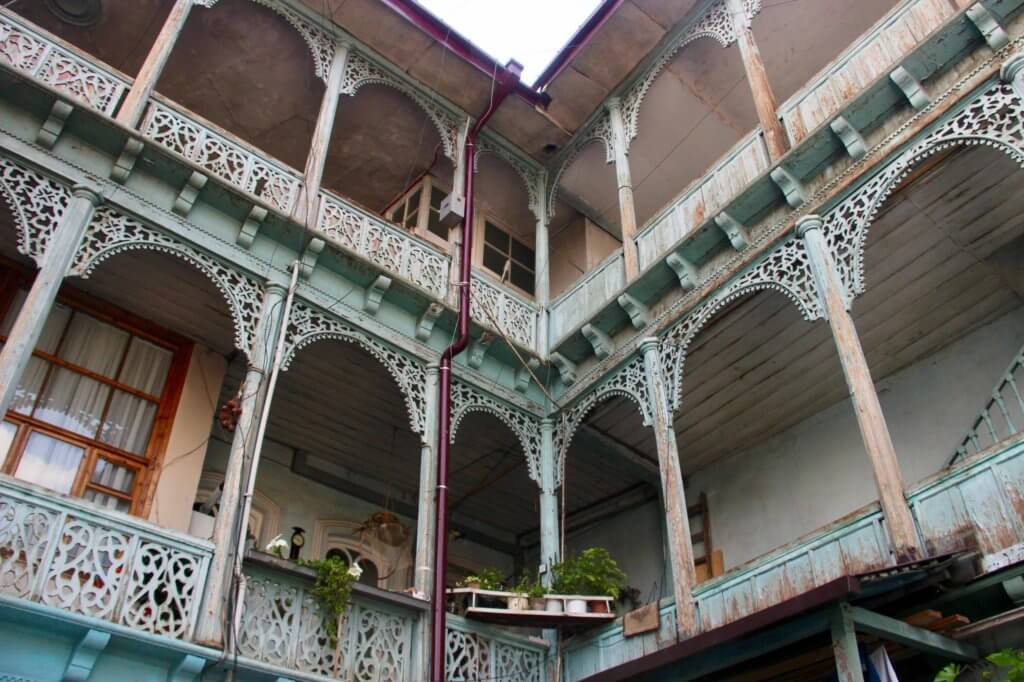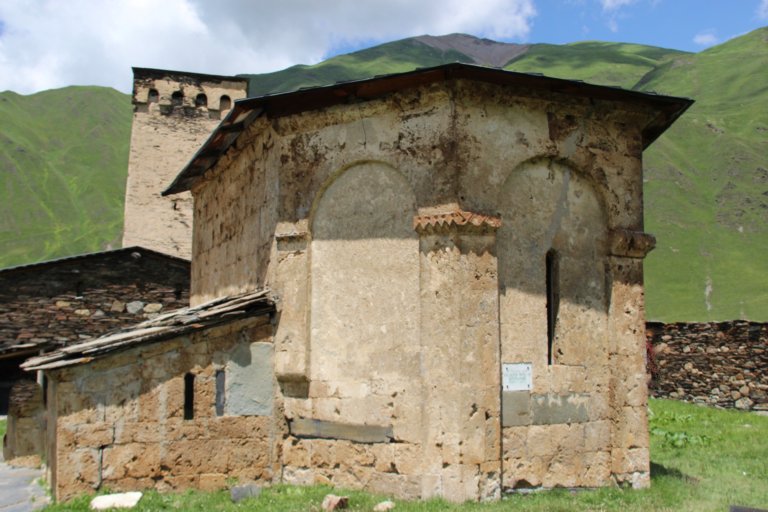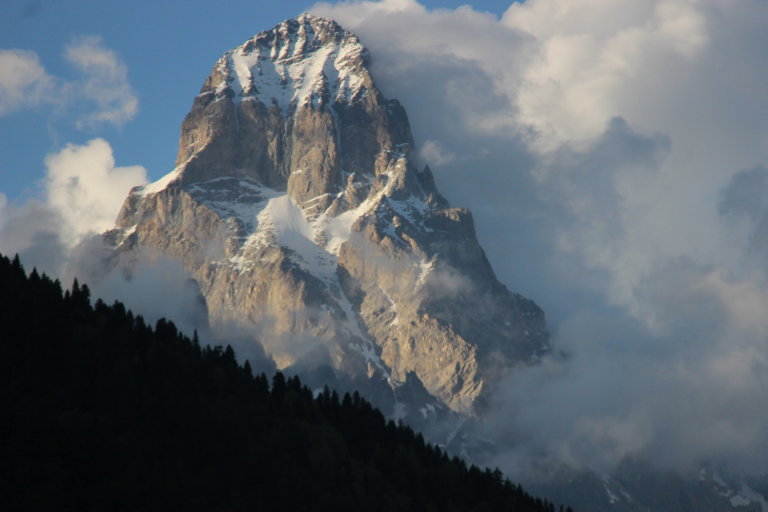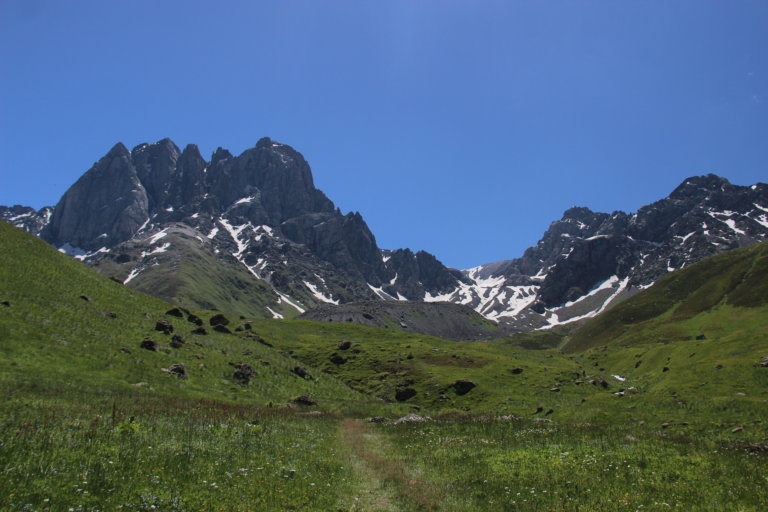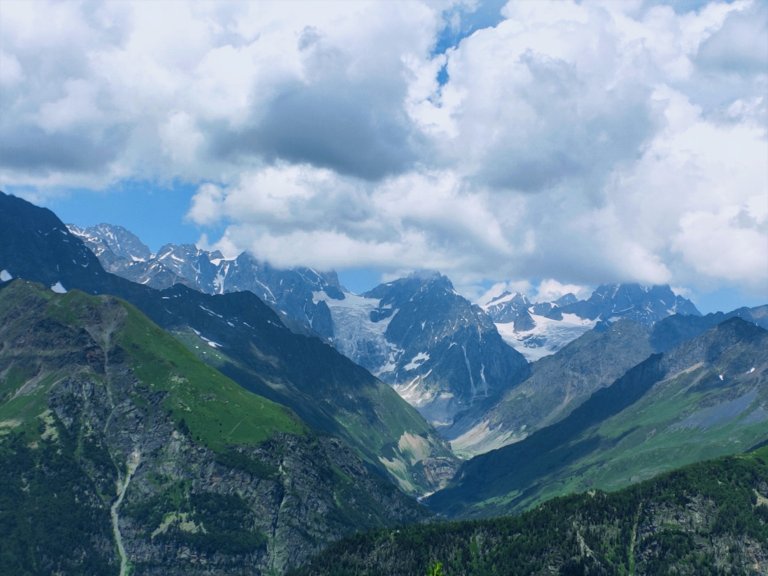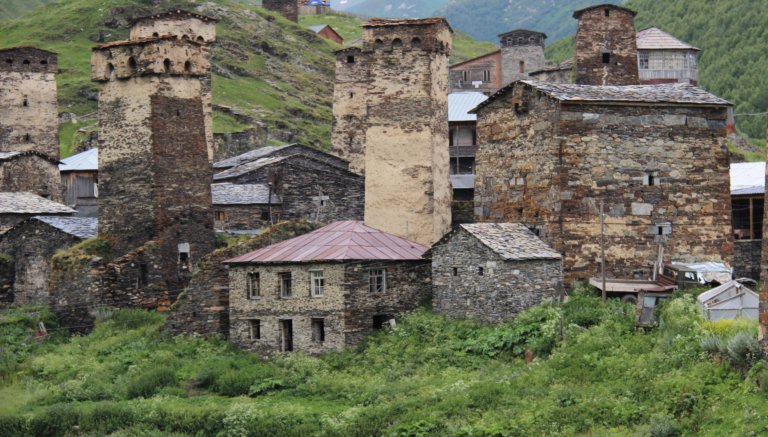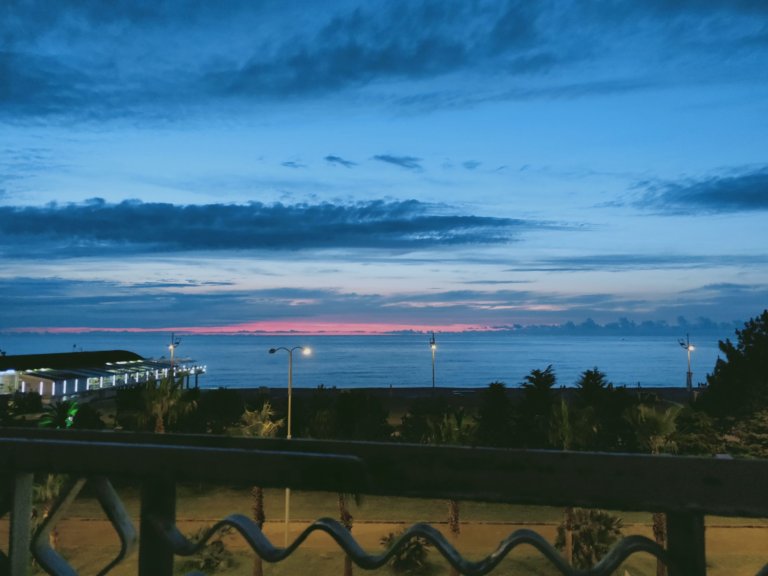Tbilisi, Georgia. Days 53 – 61 June 22nd to 28th 2019
“Tbilisi is a city where global change is happening in fast forward. The intense transformation of Georgia over the past decade is reflected particularly in the ambitious building projects that are altering its capital almost daily: Tbilisi seems to wake up with a new face every morning. This rapid transformation is creating new debates among the people of Tbilisi and raising important questions: What should be preserved and what should be destroyed? What can be owned and what belongs to everyone? What do we want to remember and what can be forgotten?” Quote from Froh! e.V Tbilisi – Archive of Transition
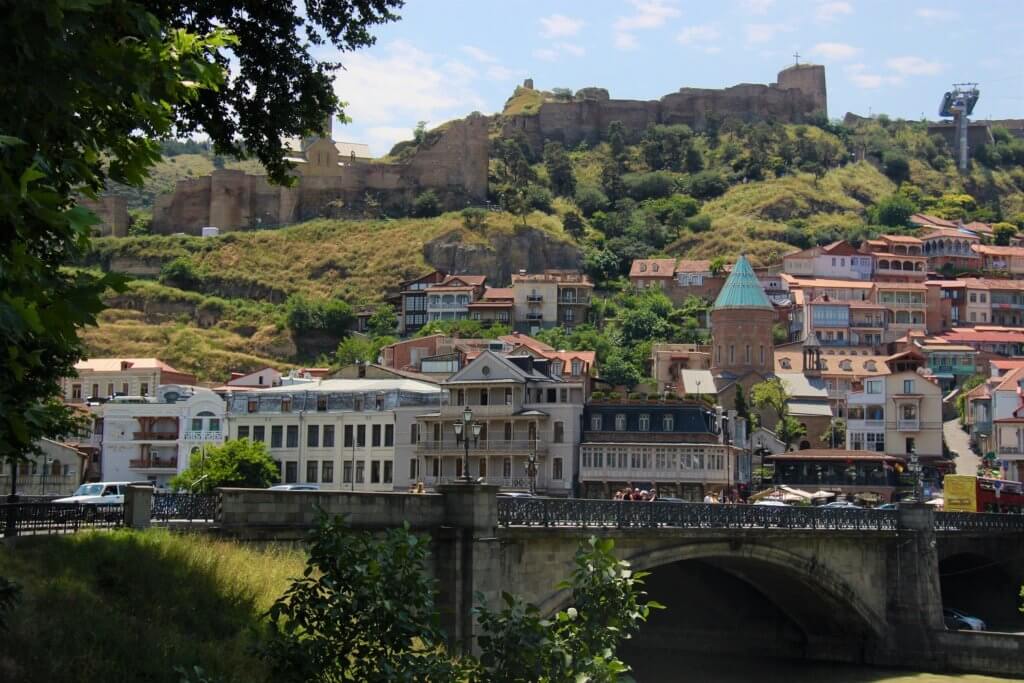
Finally here we were in Tblisi. As always – beforehand it seemed we would have a long time to get to know it. And as always it was not.
And as always Chris announced almost immediately upon entering the city – “I am not feeling the love” and by the end of the week declared it was “scruffy but endearing”. It feels like the kind of city you could hunker down in and explore at leisure over a longer time. A city with many faces and histories. As the quote above says “What should be preserved? What should be destroyed?”
The weather was reaching high 30c with not a significant cooling in the evening. This was not conducive to long rambles for me. We balanced time exploring with time relaxing in our gorgeous apartment.
Our perfect little apartment was in one of the typical courtyard blocks of Tblisi. Peeking into entranceways one can see all kinds of life in the courtyards beyond. Our courtyard was small, but always the voices of older men chatting drifted up.
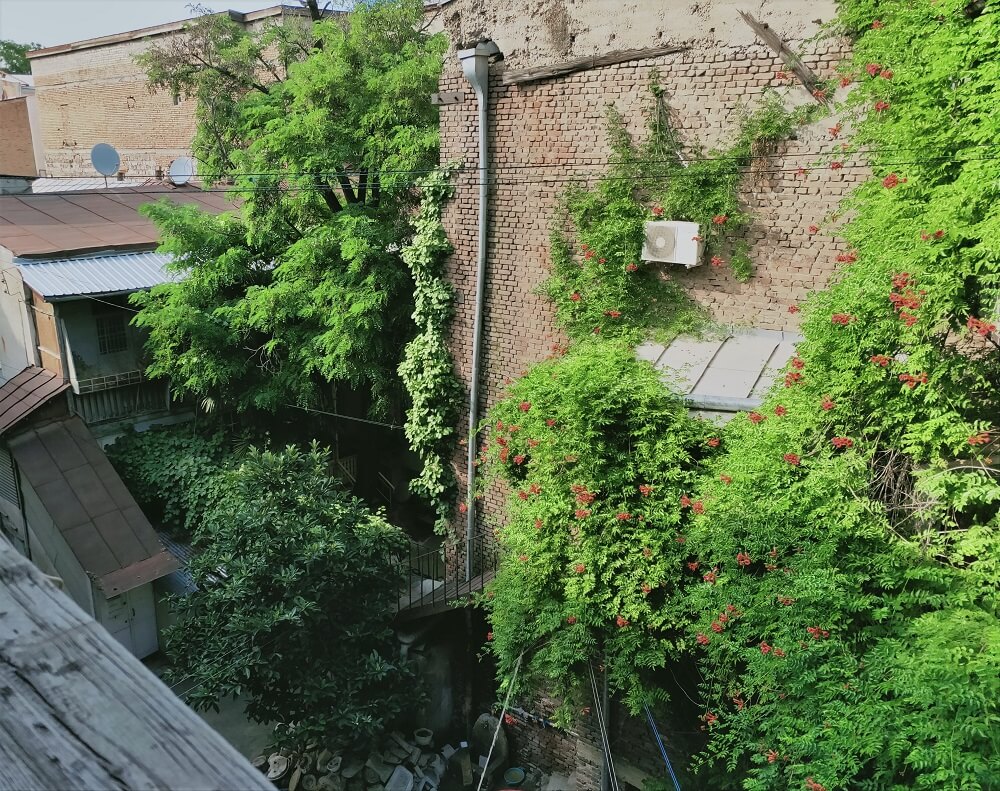
Courtyards were also the place for two restaurants we visited over the week. One a little controversial at the time and the second a hard to find gem.
Sophia Melnikovas Fantastic Dunqan was the hard to find gem – even more so as we had read to find the yellow door – which was open, so not a great landmark. The restaurant was a series of quirky furnishings both inside and out – around the courtyard. Daily life going on in the apartments surrounding it. Our dinner was interspersed with watching progress of two men fitting an air conditioner on an upper floor as they hung out adjoining windows.
The meal was one of local specialities and delicious – Georgian salad of bright red fleshy tomatoes, crisp cucumber and a walnut dressing. Chicken herby soup for me, Chicken casserole Georgian style for him and local bread.
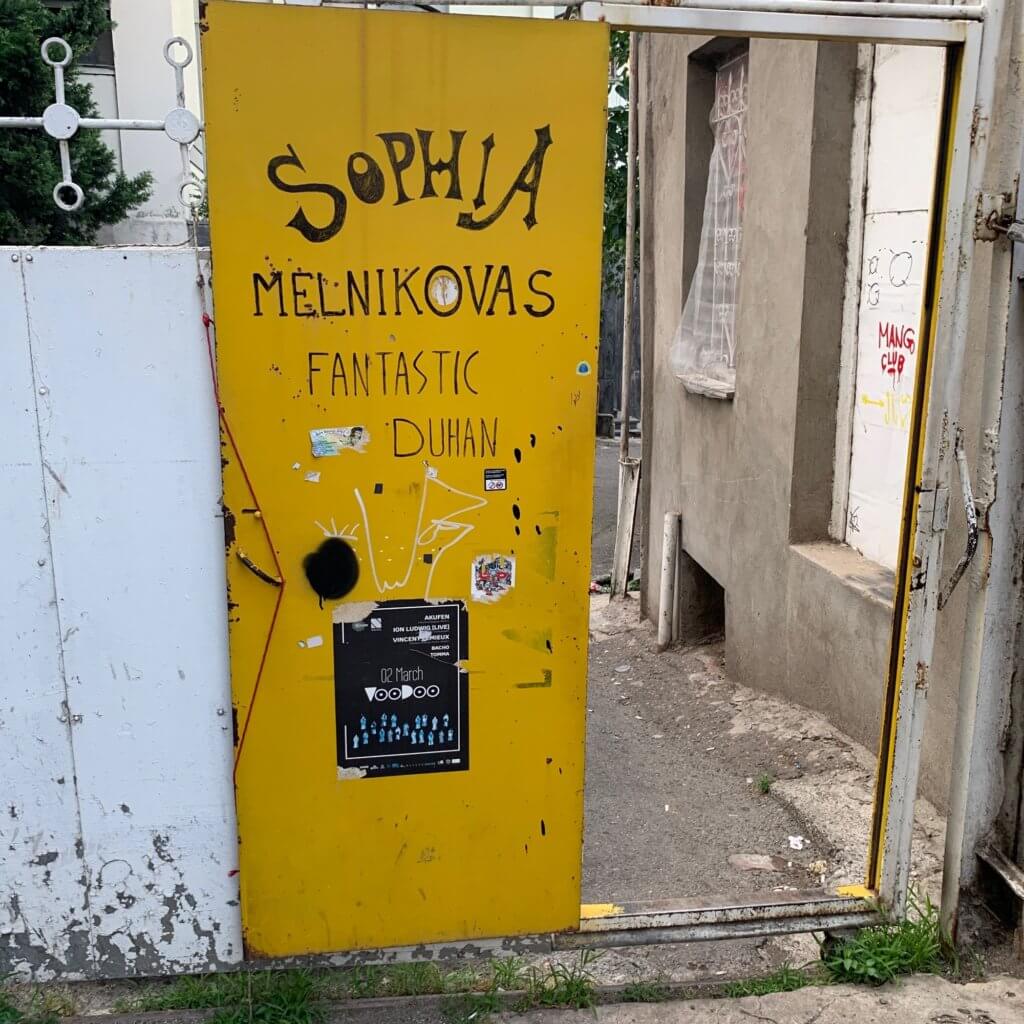
Controversial – was a Restaurant and Bar – in English The Garden. At the commencement of the current protest in Georgia this restaurant / bar had announced they would add 20% to the bill of Russian patrons as this was the percentage they believed Russian occupation of Georgia. This stance had been modified and a new approach posted on the door.
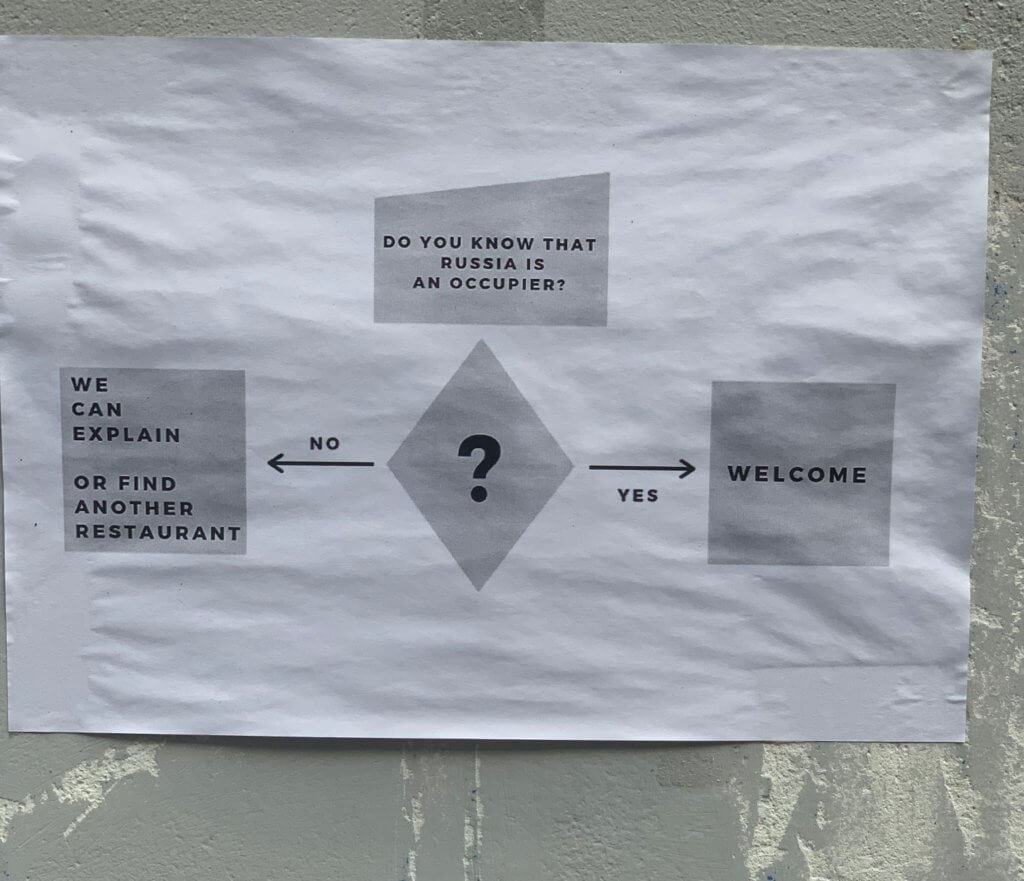
Hello Tbilisi! Our introduction to Tblisis came from Polina, whom we had met two years ago in Moscow. Having joined with Intrepid Urban Adventure Tours Poli took us on a walking tour of the old city and surrounds. And later a food tour discovering some of the delights of Georgian cuisine.
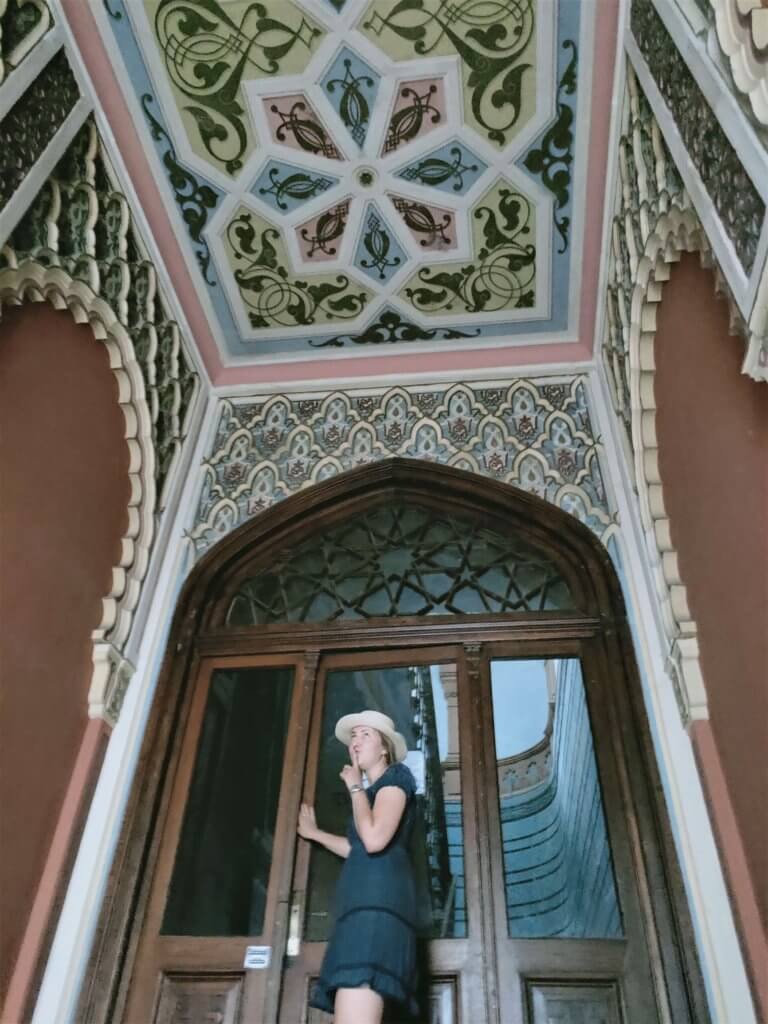
Balconies and Entrance ways . Throughout our time with Poli – and when exploring on our own – the balconies and entranceways drew my eye at every turn. Poli too was fascinated, and had read, researched and explored. Including meeting with a local historian who had researched and written a book about them.
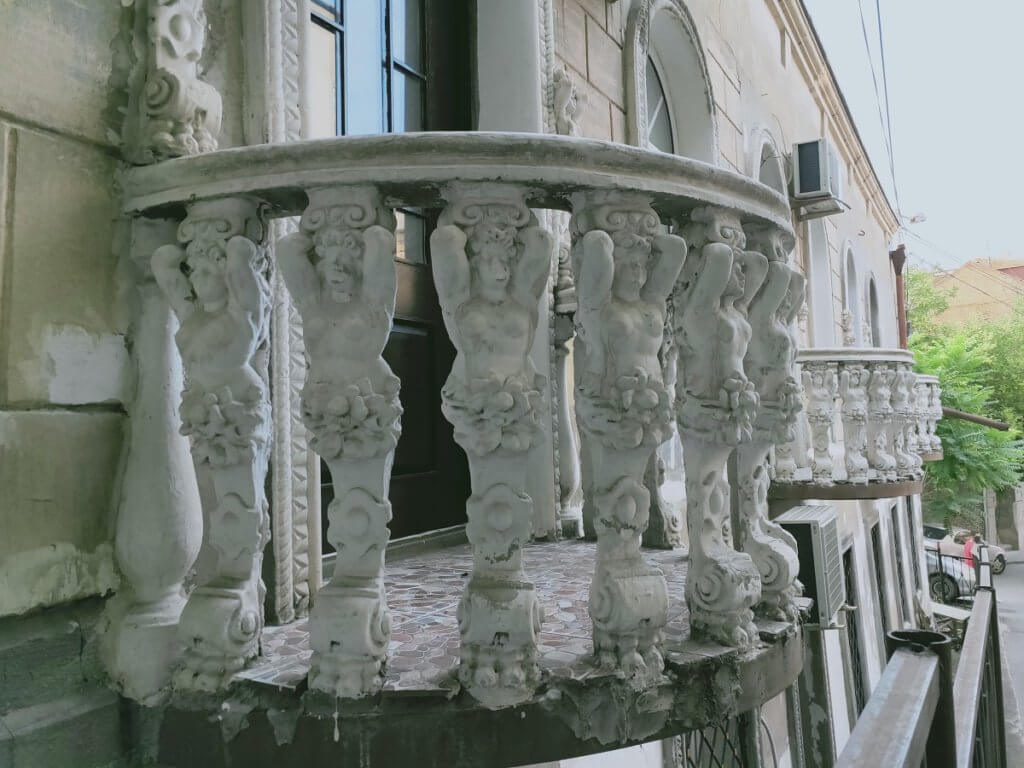
This gave us some special peeks into doorways with decaying marble stairways, fading frescoes and colourful stained glass. Some restored, some decaying but all fascinating.
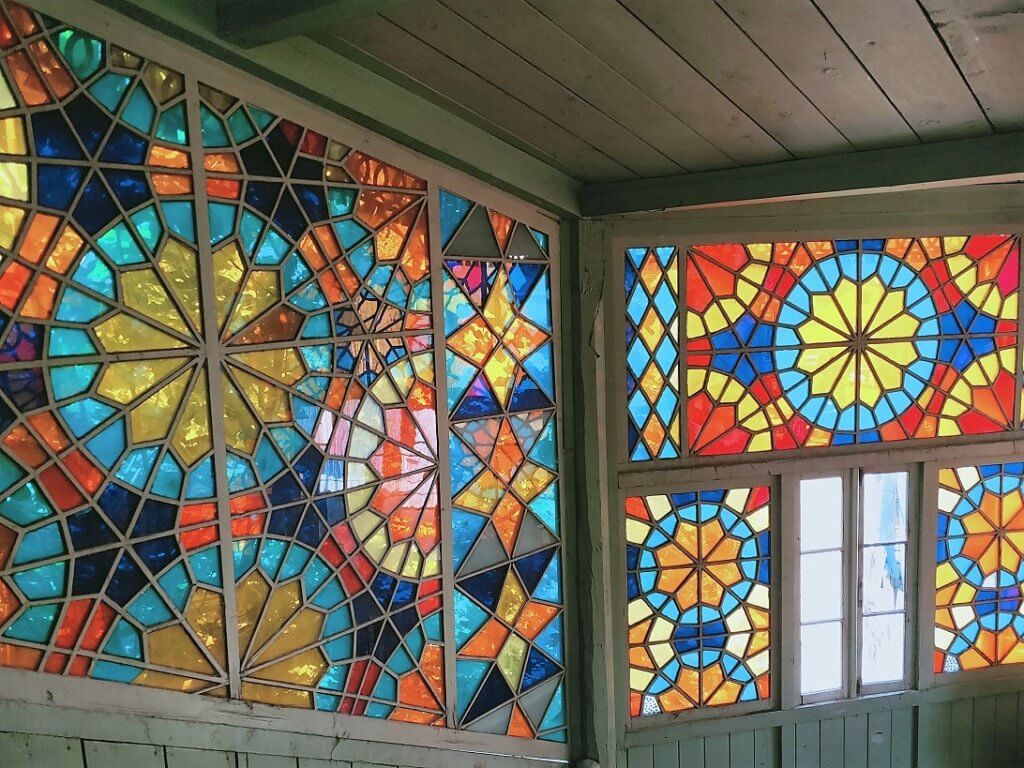
While visiting one spectacular entranceway filled with stained glass windows, we discovered Gallery27 – filled with locally made art and craft work including, silk, the traditional screen printed cloths, leather goods, and enamel work. We found our way back to this gallery for a longer look and fortunately for Chris the young woman serving presented the perfect pair of blue coloured enamel earrings within minutes! Saving hours of deliberation and “This pair or this pair?”.
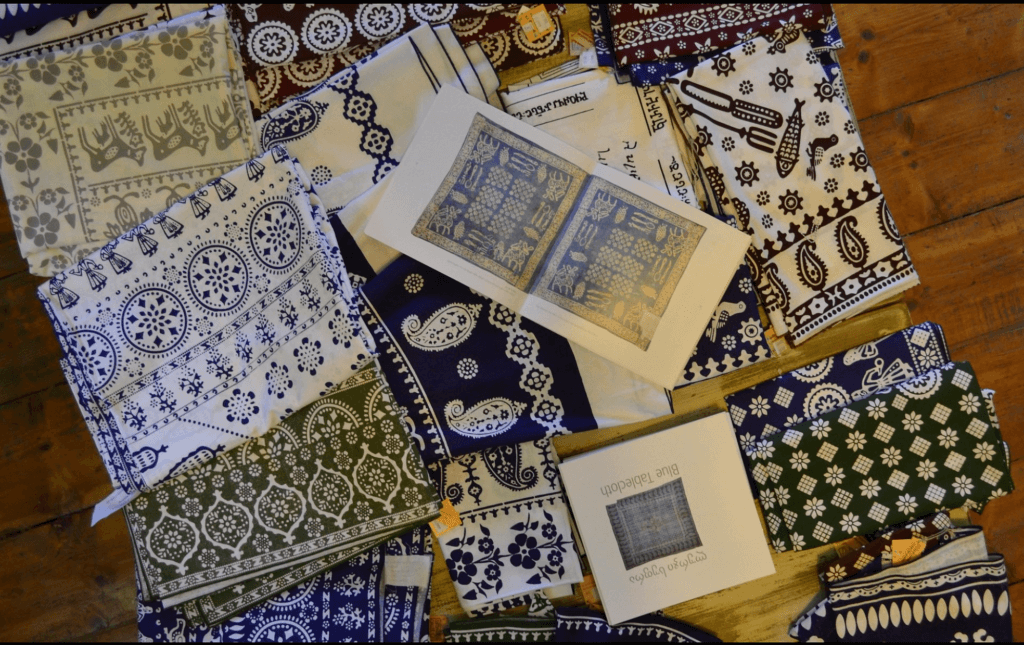
During our tour Poli had talked about Nico Pirusmani a famous Georgian artist described as “Primitivist”. I set out see more of his work – reading that it was difficult to see many of his works as they were often touring the world. Fortunately not all works and it was a delightful exhibition of colour works clearly depicting aspects of life in early Georgia.
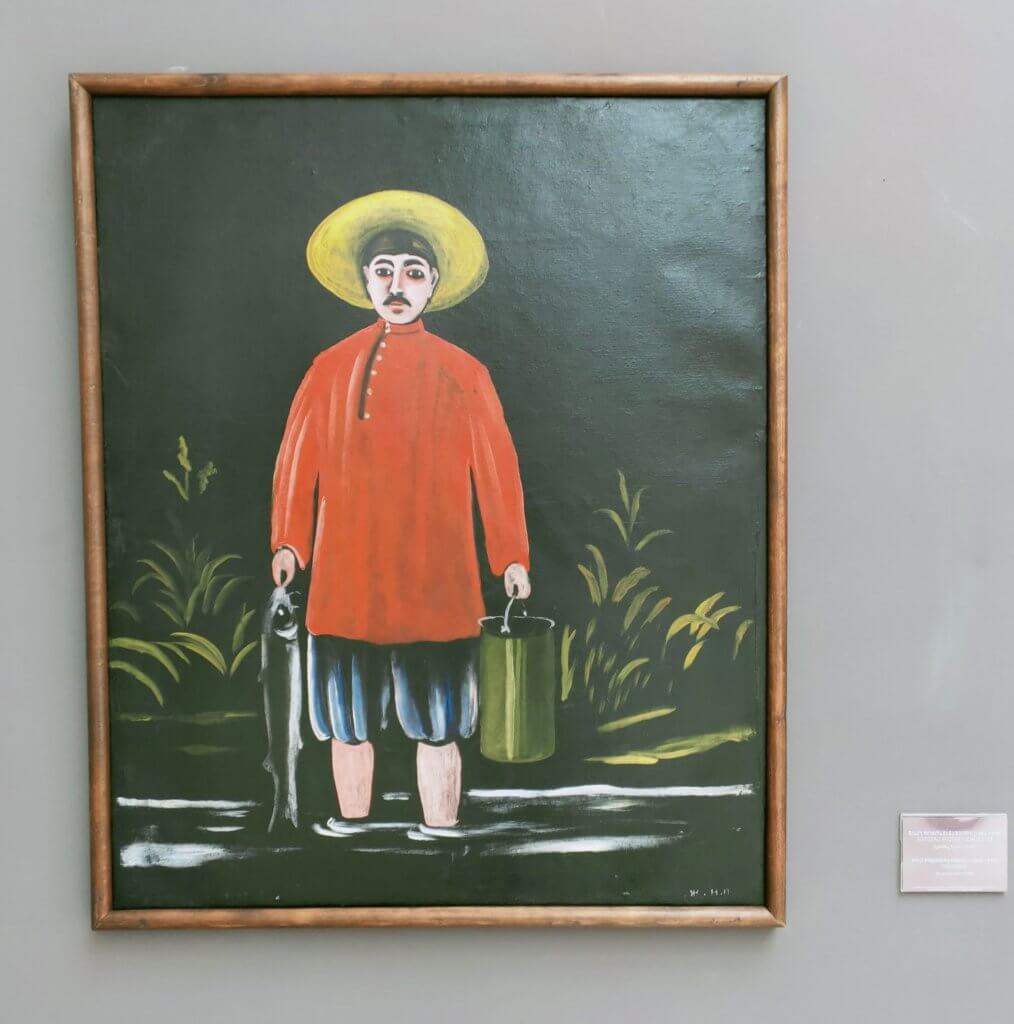
The National Gallery of Tbilisi was a small picture-perfect-well-presented gallery. Stories of the artists, sculpture, poetry, paintings were all displayed in the small well lit space. Including a room of paintings by Pirosmani. Happy Happy.
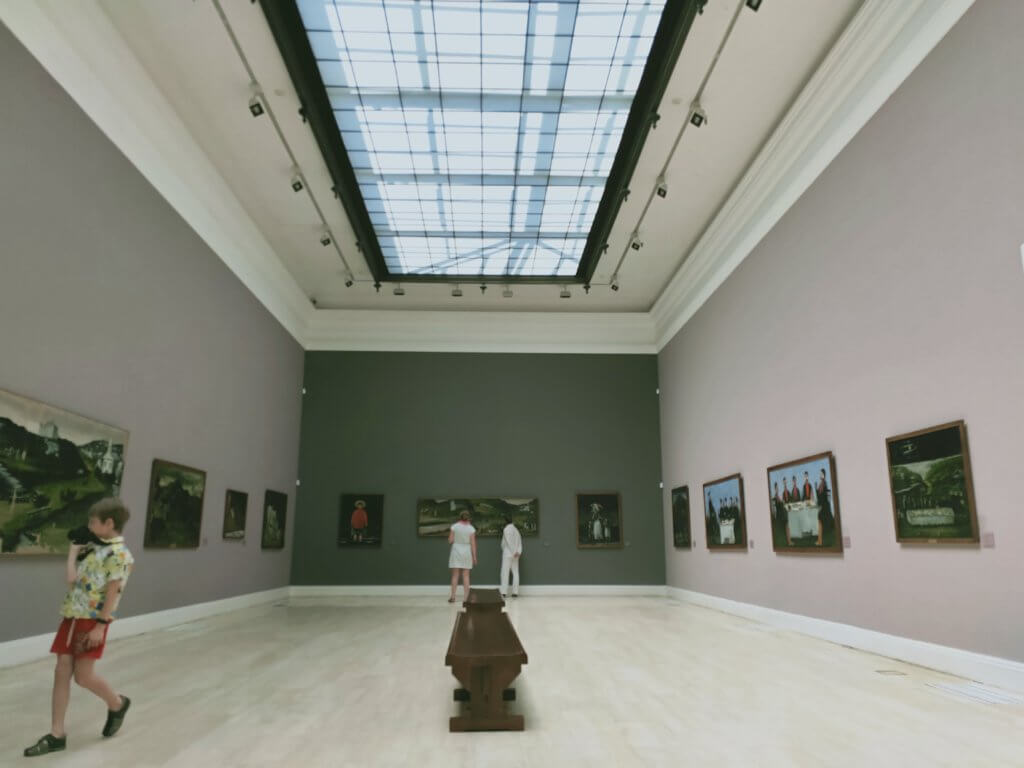
Another local artist that captured locals and visitors alike was the puppeteer Rezo Gabriadze. In addition to wonderful puppetry he had built a theatre.

A quirky building that includes theatre and restaurant draw attention particularly a daily puppet show from the wonky clock tower. A leaning tower of shapes with a tiny window at ground level announcing ‘Ticket Window’. Poli had said tickets were hard to come by at this time but we managed two.
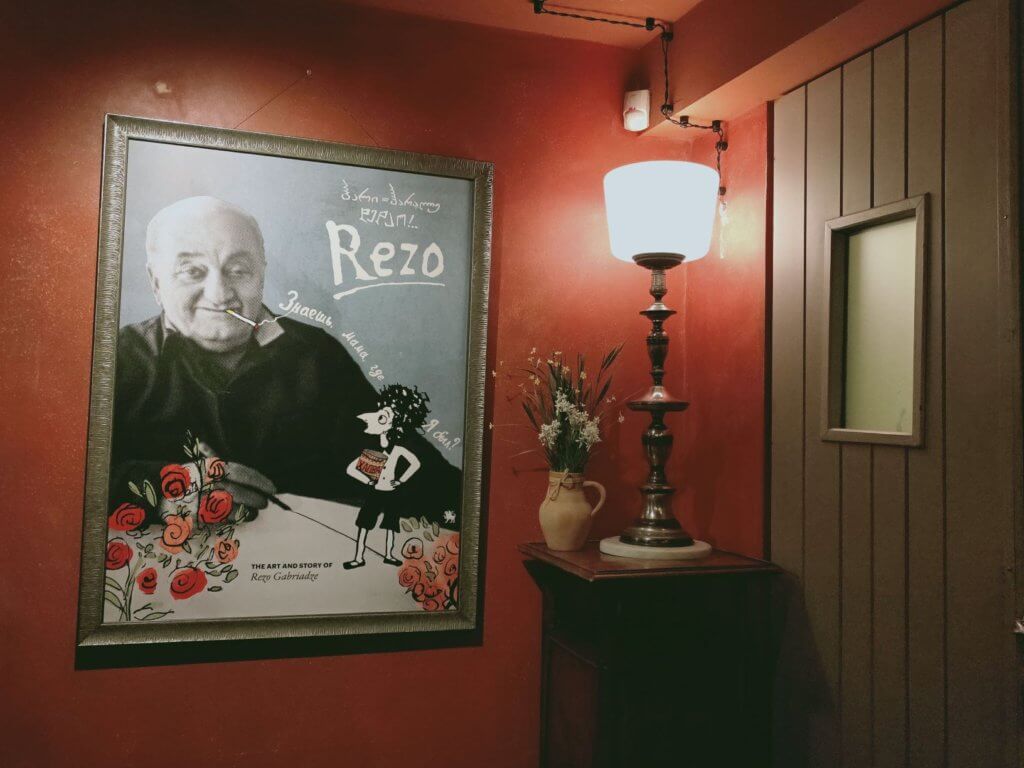
We were entranced by Ramona recommended and delightful. An evocative story of two train engines who fell in love. An adult kind of puppet theatre with a range of puppetry styles and English subtitles running above the stage.
Food and Wine feature largely in Georgian culture – and for us also in our hearts and tummies. This week was no exception. Some highlights – many experienced either on the food tour or based on Poli’s recommendations:
The wood fired bakeries – on almost every street and in every city, town and village bakers in small shops are making and selling the Georgian Puri / Shoti – a boat shaped, warm and delicious bread.
On the cultural tour we had opportunity to practice our Georgian asking for bread at a small window where bread was being baked in wood fired ovens inside – “Tu Sheidzleba (tu she-id-zle-ba) urti puri?” Could I have one bread please.
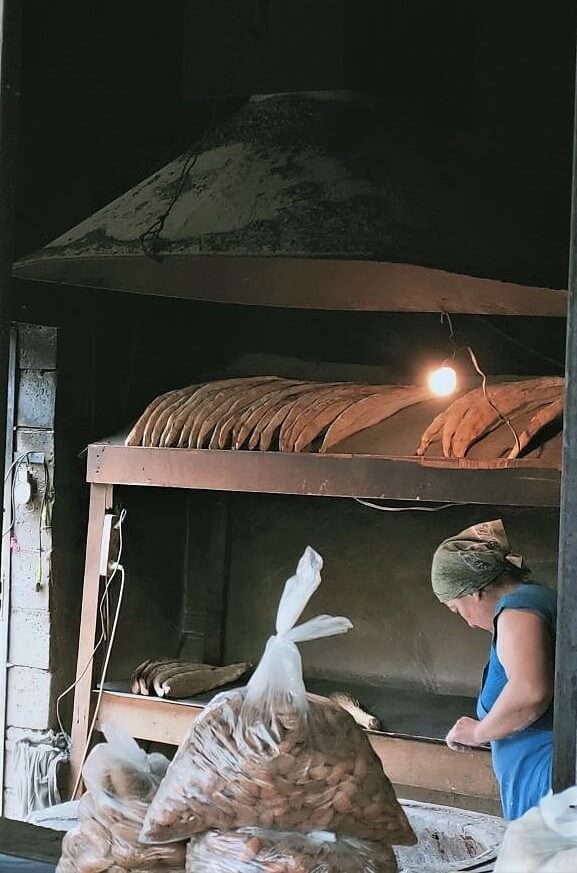
I then practised again at the little bakery beside our apartment. Delighted at my attempt the baker corrected my “puri”explaining this bread was “shoti” I think it is all in the shape! Whatever the name, having warm, fresh bread put in your hands, with the scent of freshly baked bread floating around your face – Heaven.
Khatchapuri maybe the best known of all Georgian cuisine – a delicious overload of cheese and bread. It was recommended we try this at the Puri Guliani at the top of the Funicular. On both counts – the funicular ride to the top with a view over Tblisis, and the Katchapuri were amazing. The Katchapuri was served in a boat like bread shape layered with cheese topped with a huge slab of butter and a raw egg. Break off a bit of the bread, mix it all together and scoop it our with the bread.
Another Georgian speciality “Khinkali” first eaten on our food tour. This included instructions on how to eat correctly – take a bite out of the skin, suck out the stock, eat the rest of the meat and wheat skin and leave the little stalk on your plate – and not as Chris did on someone else’s plate = mine! With the plate of delicious Khinkali we also had the traditional (though now processed and bottled) Tarragon soda drink.
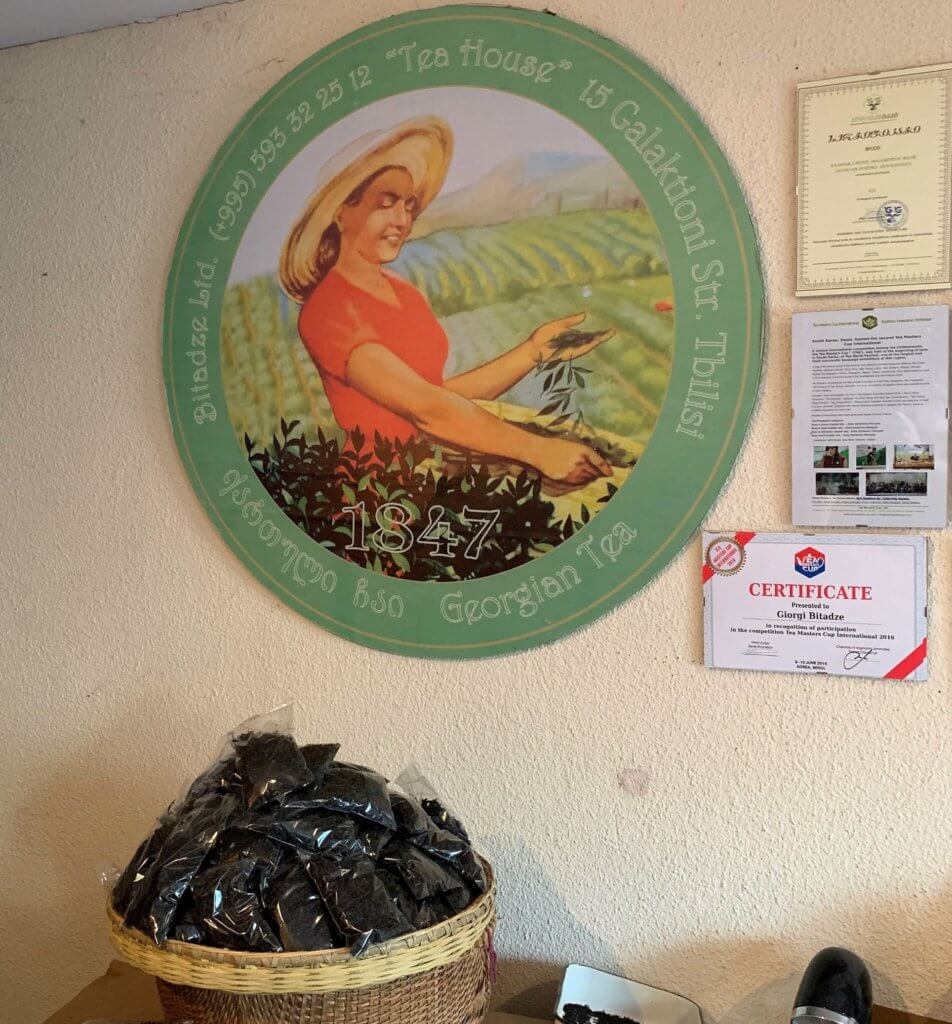
The final stop on our food tour was an exquisite Tea Shop where Shota Bitadze, a passionate tea master spent time introducing us to Georgian tea. Here we discovered the history of Georgian tea, spending time with Shota who, in 2006, founded the Georgian Organic Tea Producers Association. Fine tea with history and preparation instructions for the perfect cup for each style of tea. Delicate and delicious.
Other food discoveries were all our own:
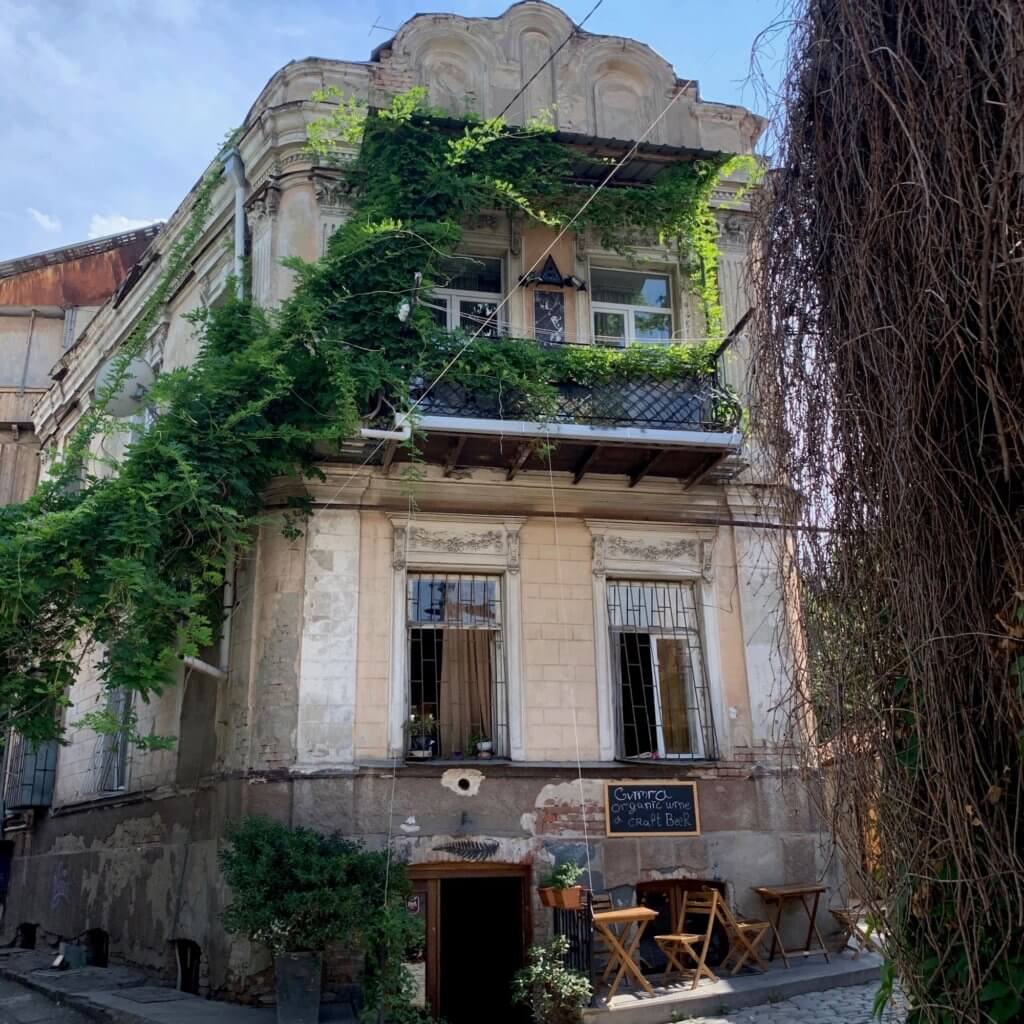
Gvimra – A restaurant announcing organic wine and craft beer. We spotted it on the walking tour and few clues, wondered if we could find it again. Surprise – on the last day we came around a corner and there it was – time for lunch we thought. What a great decision. The beer brewed in the claypots was different and pleasant. The food was superb – fresh and perfectly cooked trout atop a salad was sublime. A different style of bread almost rye texture warm and delicious.
Refreshing and interesting was the beer brewed in Qvevri – the claypots (well that is what we understood) – Amphora beer.
An added bonus was the support for a social enterprise TEMI Community Where people learn new skills in winemaking and other sustainable enterprises – “Life in Temi is based on the belief that all human beings are equal, that everyone can contribute and that each one has the right to reach his or her full potential.”
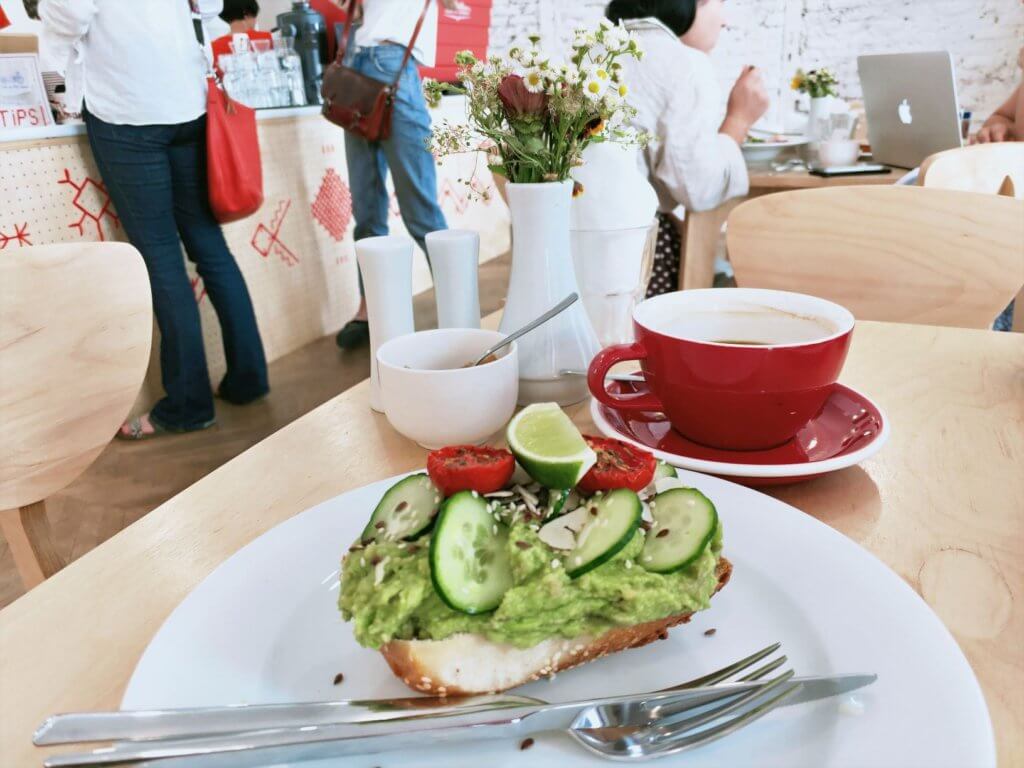
A nearby favourite cafe was accidentally discovered in our search for a good cup of coffee – and it was just around the corner- Erti Kava. Wonderful visits we had there. The first for brunch turned into a conversation with the women at the table next to us. All connected to the café, all friends, and a memorable conversation as we ate our artfully presented breakfast.
Fascinating bits and pieces in our wanderings included:
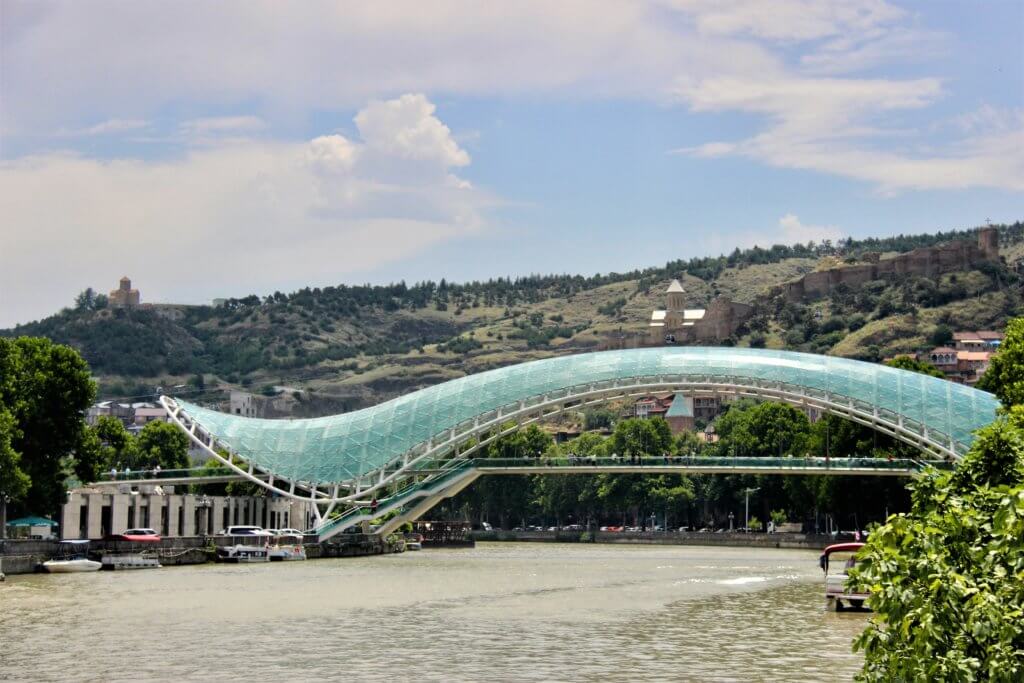
The bridge is a modern glass roofed bridge. Filled with LED lights that include Morse Code messages tapping out the Elements of the human body to remind us all we are made of the same stuff – we are all one.
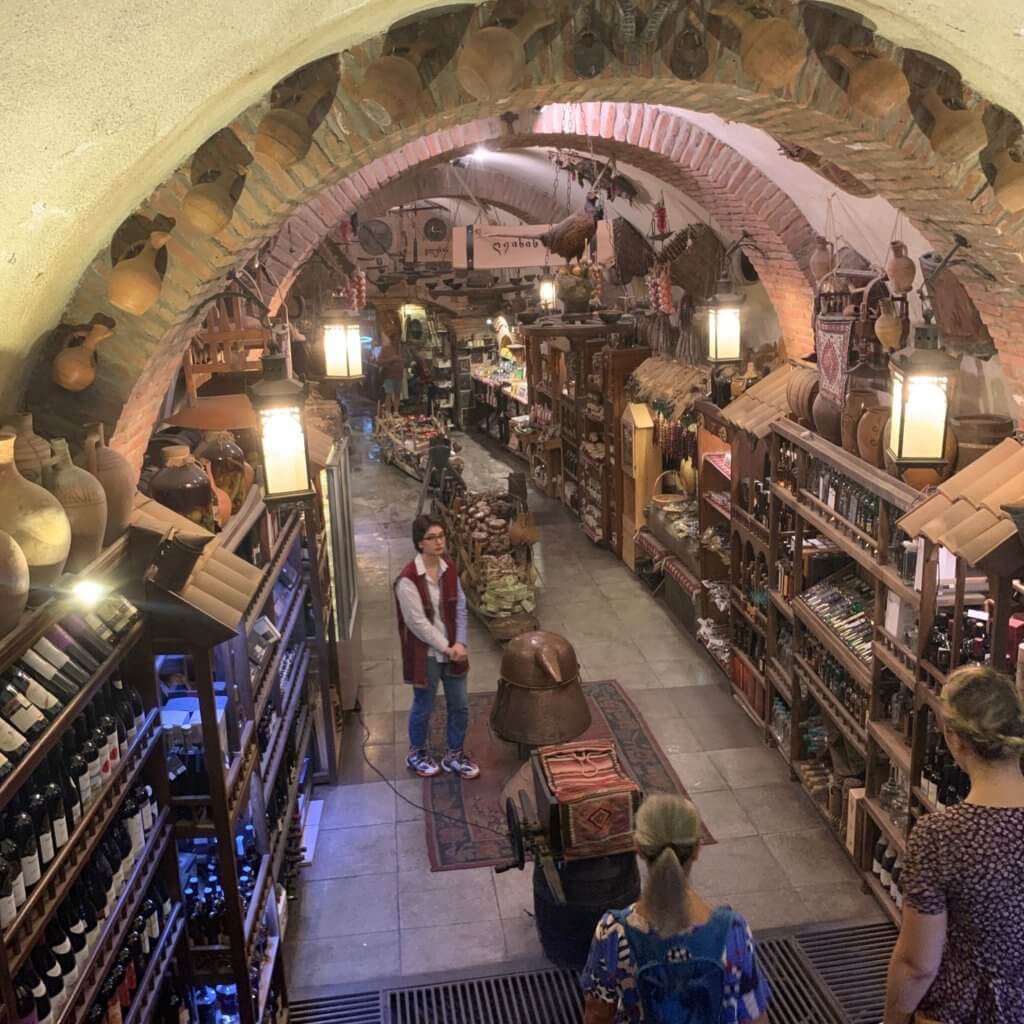
Underground Shopping is everywhere under the streets of Tbilisi, selling all kinds of goods from food to souveneirs. Many are simple small shops. A more elaborate underground shop presented all kinds of food, souveneirs, wine, antiques with music quietly playing and beautifully presented fare.
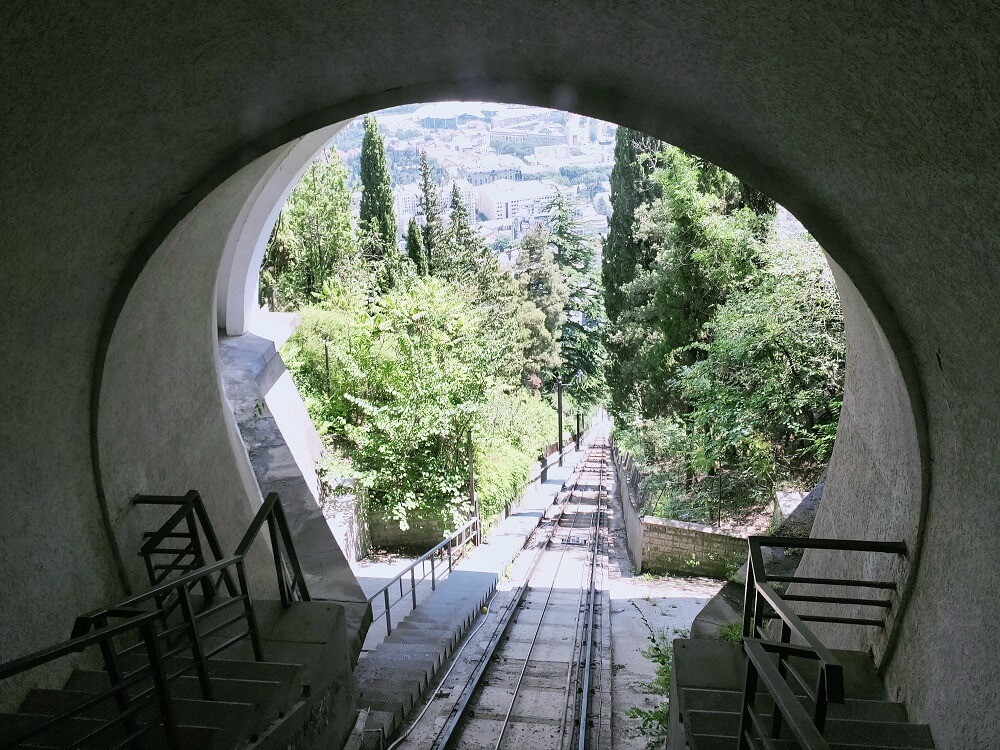
The Funicular – a confession – we went up the Funicular on Mt Mtatsminda because we were recommended the Katchapuri at the top! The ride up was a two stop lengthy haul up the hill. Once on top an amusement park covers much of the hilltop. After a short walk around – not quite feeling the need for an amusement park we found Puri Giuliano the cafe serving delicious pastries, doughnuts and Katchapuri.
After that amount of deliciousness – a walk was needed. We caught the Funincular down to the middle station and walked back to our apartment. Stopping for a walk through the Mtatsminda Pantheon of Writers and Public Figures. In the graveyard surrounding the church are buried artists, writers, poets of Georgia. Some of whom we had read about in the National Gallery.
